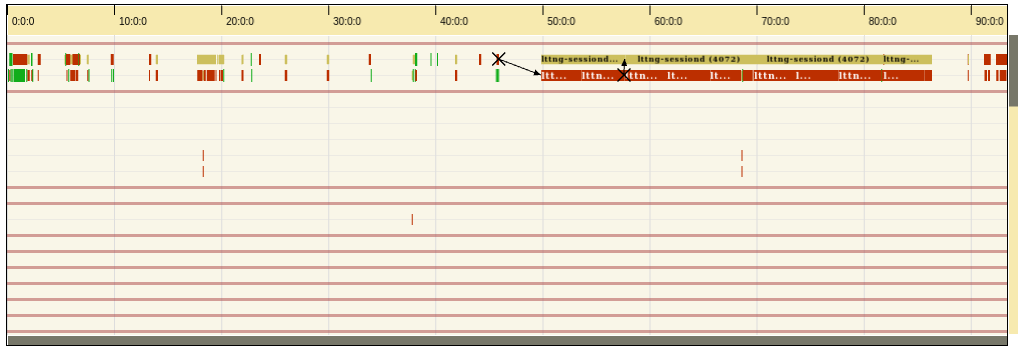A time graph / gantt chart library for large data (e.g. traces)
To build, from the root type yarn
To test an application type yarn start then open localhost:8080 on your web browser
👋 Want to help? Read our contributor guide.
For detailed description of the timeline chart library and it's components see here.
The following list of applications are currently making use of the timeline-chart library;
Tests can be executed from the root of the project with:
yarn testOr from ./timeline-chart, where the tests outputs are formatted in a more readable way:
cd timeline-chart
yarn test --verbose --watchDevelopers can use unit tests to measure the performance improvement of their changes. The following section is a quick guide on how to set up unit tests.
The TimeGraphPerformanceTest is a class that conveniently creates a timeline chart for performance tests. To construct a chart for testing, trace data and its corresponding view range is required. The class provides some methods that return important test data, such as the total length of a trace for assertions. The code is taken from the timeline chart example.
You can view an example here. In this example, test data are 'packaged' into a single object for better readability.
- The
getTimeGraphChart()method returns the constructed timeline chart. From here, developers can call any methods that they want to test on the returned chart. If the methods are protected or private, using the@ts-ignoreannotation will bypass typescript checks. - It is important to re-construct the timeline chart before each test to make sure the results are consistent.
- The tests themselves only print out the results and don't compare them to an actual value, because the threshold depends on the environment it runs. Therefore, make sure to output the performance measurement to the output console, so that it can be viewed once the tests finished running.
The following command prints a coverage report to the terminal. As of now it covers all typescript files of the project, including those that are not supposed to have tests.
yarn test --coverage --collectCoverageFrom='src/**/*.ts'

